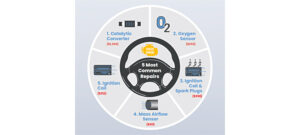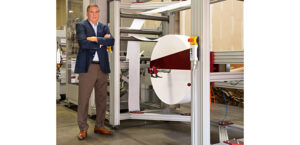For the first half of this year, overall aftermarket sales increased 13.9 percent over 2020 levels, which is a 19-percent increase over 2019
Almost 18 months ago, early in the pandemic, the automotive aftermarket industry faced the threat of plummeting demand, like many other retail industries tracked by NPD.
Looking back, we know that demand did the opposite: accelerating as the first round of federal stimulus was issued and remaining well above pre-pandemic levels ever since. While it is easy to take the increased demand at face value, there are a lot of moving pieces to the story that are very important to understand as we look ahead.

Executive Director, Industry Analyst, Automotive
Generally, 2020 showed us that front-room category retail sales growth came primarily from discretionary and recreational categories — nice to haves, not must-haves, to make a vehicle run properly. Accessories, appearance-related items, and products for towing and hauling trailers and cargo led the way.
Other categories, like marine batteries and small engine spark plugs, also grew by double digits. The picture painted by the top growth categories showed a clear change in consumer behavior — accessorizing and detailing daily drivers, people working on project cars, boats, and RVs, and those prepping family vehicles for road trips to “anywhere but here.”
While all of this growth was happening, the light-maintenance product categories that typically are the bread and butter of the store, such as motor oil and wiper blades, did not grow at all in 2020.
As 2021 began, we expected light-maintenance category performance would improve, and it did grow, compared to 2019 and 2020 levels. However, discretionary purchases also continued to enjoy very robust growth numbers — not the anticipated drop or slowing — even above what took place in 2020.
Federal stimulus checks have most definitely been part of this story (all three rounds of it), but there has also been a fundamental shift in who is buying, in addition to what they are buying and where, depending on what vehicles they drive, who owns the vehicles, and which drivers are not driving as much anymore.
The aftermarket is robust and healthy for many reasons. In fact, for the first half of this year, overall sales increased 13.9 percent over 2020 levels, which is a 19-percent increase over 2019. The new- and used-car marketplace — with supply challenges, inflated prices, competition, and other factors — is pushing consumers to keep theirs older car on the road longer than planned.
There is also a general avoidance of all forms of mass transit. Drivers are hitting the road for road trips, some with new boats or RVs in tow. Consumers have also shifted from do-it-for-me to do-it-yourself.
So, while we can talk about category growth and other overarching themes, getting “under the hood” and truly understanding what is happening at the consumer level is critical. Looking forward, it is the convergence of all of these factors affecting driver behavior that will fuel the outlook for 2022.
If you plan to attend AAPEX later this year, we will present these trends in detail, along with expectations for the coming year, based on what we know now. I hope to see you there.




Comments are closed.